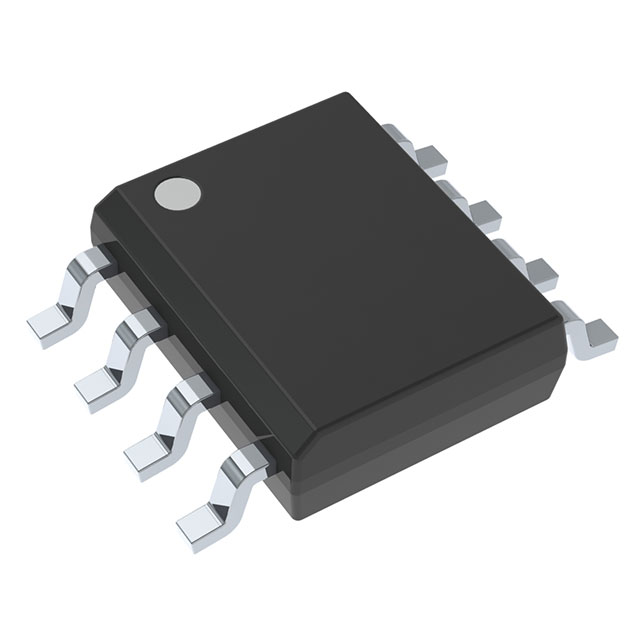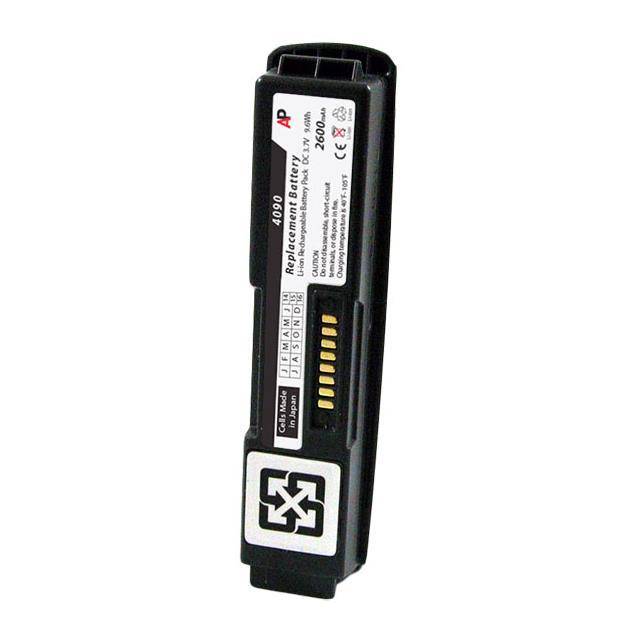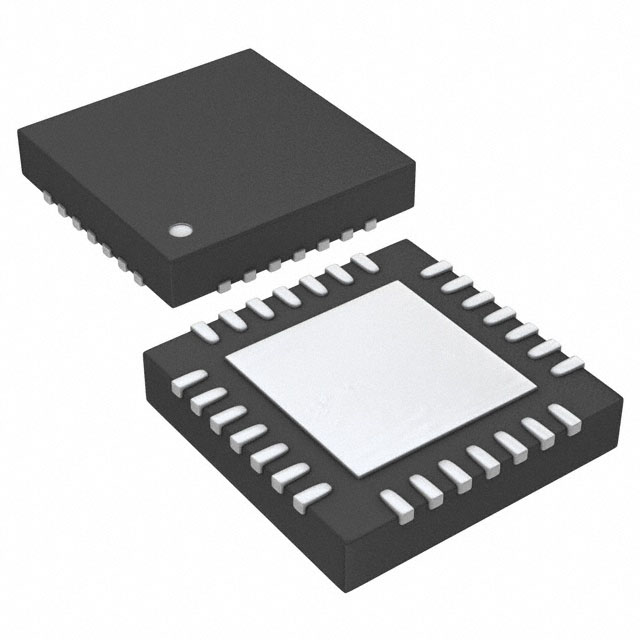
Demystifying the EV Batteries: Types, Lifespan, and Maintenance
Global electronic component supplier ERSAELECTRONICS: Rich inventory for one-stop shopping. Inquire easily, and receive fast, customized solutions and quotes.
What is an EV Battery?
.jpg?x-oss-process=image/auto-orient,1/quality,q_70/format,webp)
An EV Battery, also known as a traction battery or EV pack, is the heart of an electric vehicle. It allows the vehicle to operate without fuel or diesel by storing the electrical energy that powers the motor. An EV battery pack consists of multiple battery cells connected in series or parallel to provide the desired voltage and capacity, as opposed to the single 12-volt battery found in traditional cars.
What are EV Batteries Made Of?
Lithium-ion (Li-ion) technology is used in the most popular kind of EV battery. Several essential parts make up Li-ion batteries:
Cathode: Usually composed of lithium cobalt oxide (LiCoO2) or lithium nickel manganese cobalt oxide (NMC), the cathode is the positive electrode.
Anode: Graphite is typically used as the negative electrode.
Ions can move between the electrodes through an electrolyte, which is a separator that is filled with a lithium salt solution.
Current Collector: Conducts electricity between the electrodes and the external circuit as the current collector.
Battery Management System (BMS): Keeps track of and controls the performance and health of the battery.
During the discharge and charge cycles, several parts cooperate:
Discharge: Energy is produced by lithium ions moving from the anode to the cathode, which powers the EV motor.
Charge: To recharge the battery's energy, an external power source forces lithium ions back to the anode.
How Are EV Batteries Made?
The process of making EV batteries is intricate and involves multiple steps:
Material Processing: Graphite, lithium, cobalt, and nickel are examples of raw materials that go through refinement and purification.
Electrode Fabrication: Fabrication of the electrode involves coating the anode and cathode materials on different current collector foils.
Cell Assembly: A porous membrane divides the electrodes, which are then filled with an electrolyte solution. After that, the complete assembly is enclosed in a case.
Module and Pack Formation: To construct a battery module, several cells are electrically linked and enclosed in a protective casing. The finished EV battery pack is then assembled from several modules.
Formation and Testing: To guarantee appropriate operation and safety, the battery pack goes through its first cycles of charging and draining.
Video related to EV Batteries
Are EV Batteries Recyclable?
Yes. Although the procedures are still being developed, electric vehicle batteries are recyclable. Reusing materials reduces dependency on extracting raw materials and lessens the impact on the environment by recovering important elements like nickel, cobalt, and lithium. Many techniques are employed:
Pyrometallurgy: Metals are extracted from battery components using high temperatures.
Hydrometallurgy: Chemical procedures dissolve the battery's constituent ingredients and extract the precious parts via hydrometallurgy.
Direct Recycling: The objective of direct recycling, a more recent technique, is to directly recover and reuse electrode materials.
Technology is predicted to make the recycling of EV batteries more economical and efficient in the future, as the rate of recycling is currently expanding.
How Do EV Batteries Work?
As was previously indicated, the production of power by EV batteries depends on the transfer of lithium ions between the anode and cathode. This is a condensed explanation of the procedure:
Charging: An external power source creates a voltage difference between the electrodes when the device is plugged into a charging station. Lithium ions de-intercalate from the anode and insert (intercalate) into the cathode as a result of this.
Discharging: The BMS permits current to move between the electrodes via the external circuit when the EV is turned on. The motor is powered by the movement of lithium ions from the cathode back to the anode.
For batteries to operate safely and effectively, the BMS is essential. It keeps an eye on variables like voltage, current, and temperature to guard against overcharging, overheating, and other possible risks.
How Much Does an EV Battery Weigh?
An EV's total weight is mostly attributed to its batteries. The battery pack's weight is determined by its dimensions and capacity. This is an overview in general:
Small EVs: Compact EV battery packs can weigh between 200 and 300 kg (440 and 660 pounds).
Mid-size EVs: Battery packs for mid-size EVs may weigh between 400 and 600 kg (880 and 1320 pounds).
Large SUVs and Trucks: Battery packs for larger EVs with longer ranges can weigh more than 700 kg (1540 pounds).
Although an EV's weight might impact its efficiency and driving characteristics, manufacturers are always developing lighter, more energy-dense battery technology.
Are EV Batteries Bad for the Environment?
EV batteries have advantages and disadvantages for the environment:
Advantages:
Reduced Emissions: Since electric cars don't emit any exhaust emissions, the air quality is considerably better, especially in cities.
Disadvantages:
Battery Production: Extracting raw materials for batteries can have negative environmental effects and ethical implications.
Recycling Challenges: Since EV battery recycling is still in its infancy, some batteries may wind up in landfills.
In general, EV batteries are thought to be more environmentally friendly than gasoline-powered cars, particularly when taking into account the entirety of their lifespan. To reduce the negative effects on the environment, experts are always working to improve battery production processes and recycling strategies.
How Long Do EV Batteries Last?
About 8 to 10 years or 100,000 to 150,000 miles is the standard estimate for the lifespan of an EV battery. Unfortunately, several things can affect how quickly batteries degrade:
Depth of Discharge (DoD): The proportion of battery capacity utilized during a single cycle. Degradation can be sped up by frequent deep releases.
Charging Habits: Quick DC charging might produce heat and put the battery under stress. Aim for a mix of slower AC charging at home and faster DC charging during extended travels.
Temperature: The health of a battery can be adversely affected by extremely hot or cold conditions.
Manufacturer and Model: Different manufacturers use different battery technologies and designs.
Even Nevertheless, battery lifespan is getting longer and longer thanks to technological developments.
How Often Do EV Batteries Need to Replaced?
Most of the time, the EV battery pack won't need to be replaced in its entirety throughout the normal ownership duration (around 5-8 years). Since EVs are made with battery deterioration in mind, there is a chance that their usable range will gradually diminish. Nonetheless, the majority of batteries will continue to have enough capacity to cover most driving needs for many years because of the longer lifespans that were previously described.
Replacing your battery could be an option if its condition does not improve considerably and its range is too low. On the other hand, replacing an entire battery pack can be expensive. Fortunately, future battery replacement costs should decrease due to developments in battery technology.
What Happens to EV Batteries When They Die?
Electric vehicle batteries are not meant to "die" entirely. They do, however, deteriorate and lose some of their capacity over time, as was previously stated. When a battery gets to the point where it isn't long enough for regular use, it can be:
Repurposed: Old batteries with smaller capacities might still be useful in situations with lower demands, like powering stationary energy storage devices.
Recycled: As was previously said, recycling electric vehicle batteries is growing in popularity, and efforts are being made to make the procedure both ecologically benign and effective.
Responsibly Disposed Of: To prevent environmental risks, appropriate disposal is essential if recycling is not a possibility. Manufacturers of electric vehicles and companies that recycle batteries usually have policies in place for disposing of batteries responsibly.
How Are EV Batteries Disposed Of?
It is never appropriate to dispose of EV batteries in ordinary trash. Hazardous materials may leak into the environment as a result of improper disposal. With a used EV battery, you should do the following:
Check with your EV manufacturer: For spent batteries, the majority of manufacturers have set up take-back initiatives.
Look for certified battery recyclers: EV battery recycling is a specialty of several businesses. Make sure they adhere to ethical standards and possess the necessary qualifications.
How to Maintain EV Battery?
Even though EV batteries are made to require little upkeep, there are a few habits that might prolong their life and improve their efficiency:
Avoid extreme temperatures: To reduce exposure to extreme heat or cold, park your electric vehicle (EV) whenever possible in a garage or other shaded place. Both have the potential to hasten battery deterioration.
Optimize charging habits: For extended travels, try to combine faster DC charging with slower AC charging at home. Rapid DC charging regularly might overheat the battery.
Maintain a moderate charge level: Avoid leaving it fully charged for prolonged periods. For everyday use, it is best to maintain the charge level between 20% and 80%.
Follow manufacturer recommendations: See the owner's manual for your EV to find precise instructions on charging and maintenance.
You can help your EV battery last longer and in better condition by heeding these suggestions.
Where Do EV Batteries Come From?
There are numerous companies worldwide that produce EV batteries. Important participants consist of:
CATL (China): By volume, CATL (China) is the biggest producer of EV batteries worldwide.
BYD (China): China's BYD is a major manufacturer of batteries and electric cars.
LG Chem (South Korea): A major battery provider to manufacturers like Tesla and General Motors is LG Chem, based in South Korea.
Panasonic (Japan): Japan's Panasonic has been a longstanding supplier of batteries to Tesla.
Samsung SDI (South Korea): Another significant player in the EV battery business is Samsung SDI, based in South Korea.
Concerns about the geographic concentration of battery production are growing, and automakers are making more of an effort to diversify their supply chains and open up additional locations for battery production.
Conclusion
EV batteries are the heart of electric vehicles, powering them with clean and sustainable energy. Making educated decisions about EV ownership requires an understanding of their lifespan, functioning, and makeup. We may anticipate even more range, quicker charging times, and increased sustainability in the future as battery technology develops. We can help create a more sustainable and clean transportation environment by supporting electric vehicles and learning about their batteries.
FAQs
How long do EV batteries last in years?
Depending on usage, EV batteries can have a lifespan of eight to twelve years. In ideal circumstances, the battery may last up to 15 years, but there's a significant chance it may last even longer. Batteries are normally covered by manufacturers' warranties for eight years or 100,000 miles, whichever comes first. You should be able to determine the anticipated lifespan based on this.
Are there different types of EV batteries?
Yes, while Lithium-ion (Li-ion) batteries are the dominant technology, there are other types under development, such as solid-state batteries. While they are not currently generally accessible in the market, these have the potential to provide benefits including quicker charging times and enhanced safety.
What are the benefits of owning an EV?
EVs offer numerous benefits, including:
Zero tailpipe emissions: They help to cut greenhouse gas emissions and improve air quality.
Lower operating costs: EVs require less maintenance than gasoline-powered vehicles, and electricity is typically less expensive than gasoline.
Quiet operation: Driving an EV is a more tranquil experience.
Tax credits and incentives: Governments all across the world provide tax breaks and other incentives to encourage the purchase of electric vehicles.
You can contribute to a more sustainable future and make educated decisions about owning electric vehicles by being aware of the capabilities and features of EV batteries.
Related Articles
- ·Insulated Gate Bipolar Transistor (IGBT): The Dragon Rider of High-Power Circuits
- ·Transistor Symbol: The Blockbuster Guide (With Zero Boring)
- ·ICD Electronics: Tiny Lightning, Relentless Reliability
- ·Smart Pill Dispensing Electronics: From Missed Doses to Mission Control
- ·Conditional Access Module (CAM): The Pay-TV Gatekeeper Engineers Actually Enjoy Reading About
- ·NC Formula Semiconductor: The Blockbuster Guide You Didn’t Know You Needed
- ·Electrosurgery Electronics: Turning RF Into a Surgical Superpower
- ·Endoscopic Imaging Electronics: Tiny Optics, Big Picture
- ·Instrument Cluster: The Dashboard Wizard That Makes You Feel Like Iron Man
- ·X-ray & CT Electronics: From Kilovolts to Reconstruction




















.png?x-oss-process=image/format,webp/resize,h_32)










